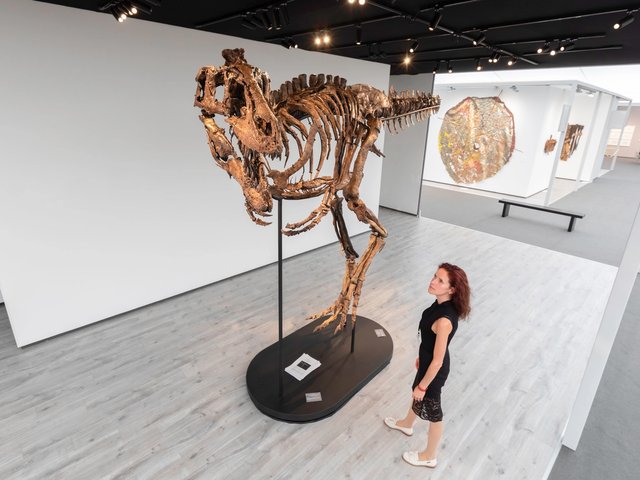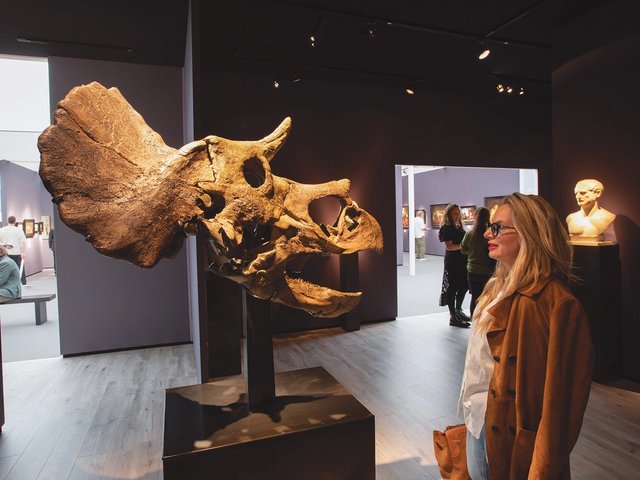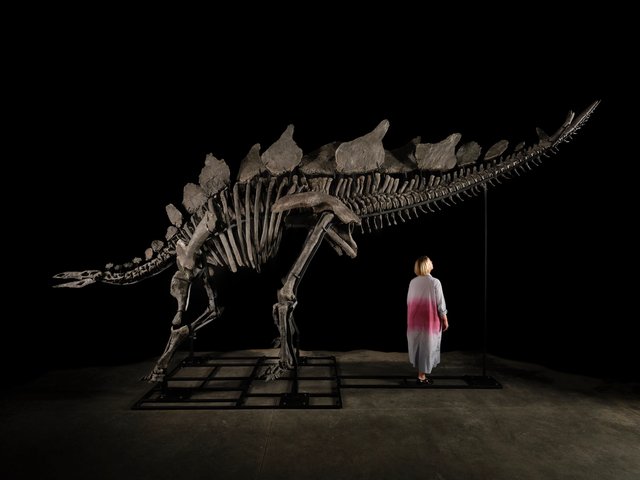The market for non-manmade artefacts such as fossils, minerals and meteorites is maturing but, as a number of recent auction sales suggest, it is not without growing pains. Late last year, Christie’s dramatically pulled ‘Shen’, a Tyrannosaurus rex skeleton, estimated to be worth between $15m and $25m, from an auction in Hong Kong following a last-minute “consultation” with the consignor. Concerns had been raised by experts at the Black Hills Institute of Geological Research over its similarity to ‘Stan’, another T-rex, which sold at Christie’s New York in 2020 for a record $31.8m.
“To think these emerging markets don’t have pitfalls or challenges would be naïve,” says Costas Paraskevaides, the director of London-based gallery ArtAncient, which has regularly shown fossils at fairs since 2013 and suggests that around 50% of his gallery’s trade is now focused on non-manmade items. “It’s a really exciting time for natural history, which has attracted so much attention in the past few years, although there is less of a history for the pieces on the auction block.”
Indeed, while the antiquities market has increasingly faced growing international legislation around its sourcing and collection, trade in non-manmade objects (including, fossils, skeletons and meteorites) is less consistent.
Paraskevaides notes that the trade does not yet have the same level of connoisseurship as is found elsewhere in antiquities. “Due diligence often starts with establishing the exact parcel of land where a fossil was found and examining the lease,” he says. Jurisdiction covering the site of discovery is key, he adds, pointing out that, for example, in North America it tends to be more a case of “finders, keepers”, while in China it is illegal to hunt for fossils.
The sheer accessibility of the market has raised concerns among specialists that the high-end examples of finds are soon priced outside of museum budgets. In 2020 the Society of Vertebrate Paleontology wrote to Christie’s over the sale of Stan, urging that the “sale should be restricted to bidders from institutions committed to curating specimens for the public good”.
But the internet has raised the scale and accessibility of the market, supported by lower price points and a larger pool of potential buyers.
“You don’t need to be a millionaire to buy a small meteorite for a few dollars or euros,” says Tomasz Jakubowski, a board member of the Polish Meteorite Society, who also actively sources examples for sale. “Changes are big, particularly with more presence on social media. The number of collectors is slowly increasing.”





